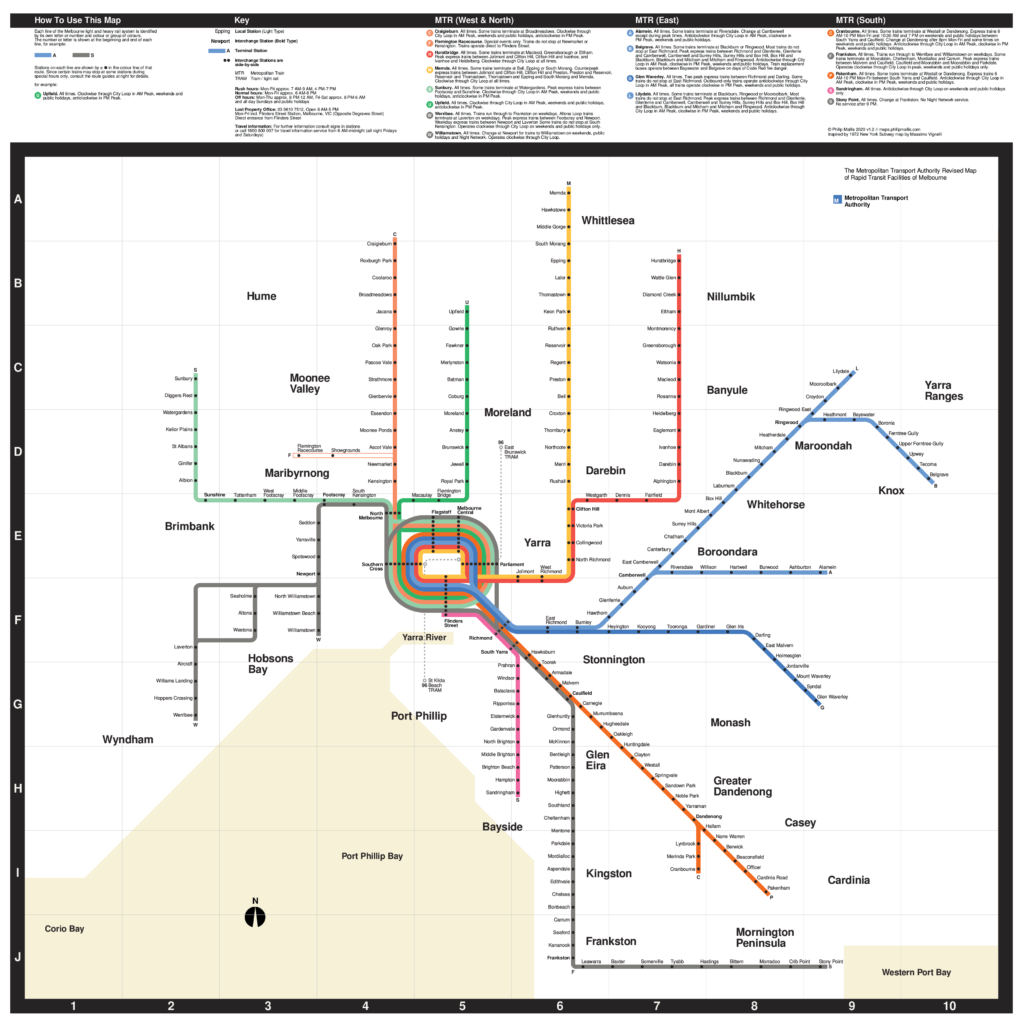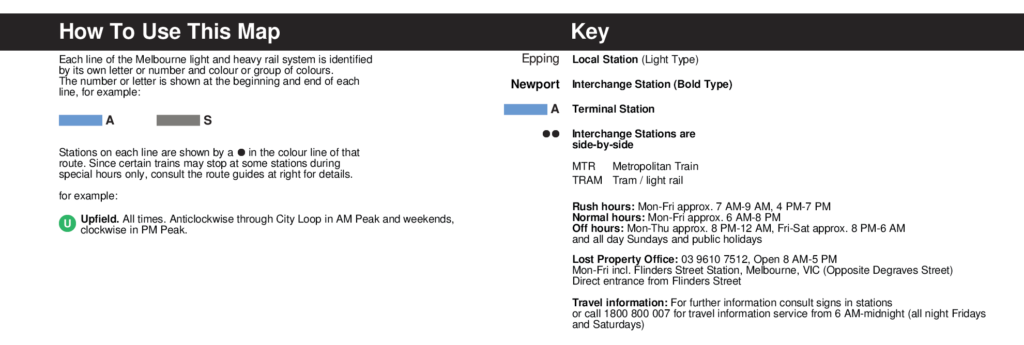Design notes
Transfer stations on the original map are more complex – mainly by virtue of New York’s ticketing system. In New York, free transfers are not always applicable (i.e. when you are not penalised for changing trains or other public transport vehicles). In Melbourne, you are never charged for interchanging – which I think is one of the great virtues of our public transport system. This means that differentiating between free and non-free transfer points is not necessary.
One thing that is quite different to the current branding of Melbourne’s rail network is the way that individual lines are treated. In the New York Subway, there is an intricate system of colours, numbers and letters to show the large variety of services. This is all incredibly confusing to me and I can’t quite get my head around how it works. As Melbourne’s lines don’t operate in the same way, I’ve adopted a hybrid approach. Each line has its own colour and letter, with branch lines sharing a colour (e.g. Williamstown and Werribee Lines).
The map’s legend at the top is also arranged a little differently. Because the New York Subway has several trunk line groups, this is how the original legend is organised. Melbourne’s network doesn’t have this system. Instead, I have split the three columns for convenience into West & North, East and South lines. The main reason for splitting East and South was the extensive explanations required for the Alamein/Belgrave/Lilydale lines, which have the most complex stopping patterns on the entire network.
One of the defining features of the 1972 map is the use of the iconic Helvetica font. There is this fascinating writeup on the topic and why a universal font was not used for the wayfinding design suite at the time, but either way, both Helvetica and Standard are commercial products that require an expensive license. I spent a lot of time trying different alternatives to come as close as possible to the original design. Freesans (licensed under GNU) is the best one that I found. I worked with Arial as an interim solution until I could find a better font, but Freesans is a fantastic alternative that I will probably use again.
Finally, I have not used exactly the original colour palette from the original map. Instead, most of the colours are slightly washed out to account for the fact that most copies of this design that I can find are scanned or otherwise a little rough around the edges. I think it lends itself to the grunge often associated with New York City and its subway.

